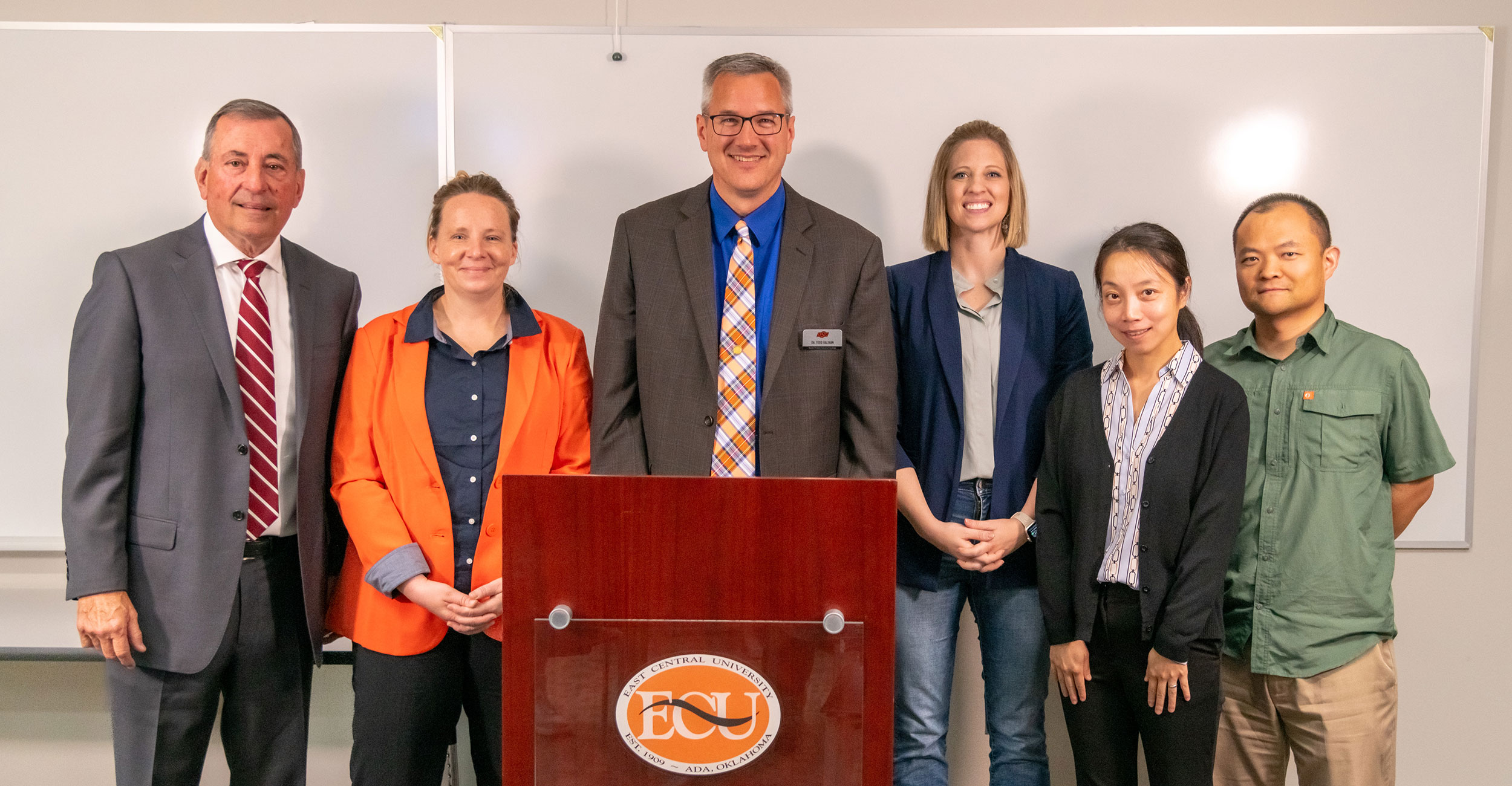
OSU receives $2M EPA grant to research enhanced aquifer recharge
Wednesday, October 11, 2023
Media Contact: Elizabeth Gosney | CAS Marketing and Communications Manager | 405-744-7497 | egosney@okstate.edu
On Sept. 21, the U.S. Environmental Protection Agency announced that Oklahoma State University geology professor Dr. Todd Halihan, is the recipient of a nearly $2 million research grant to study the use and risks of enhanced aquifer recharge (EAR) to improve groundwater availability and quality.
Along with his team of researchers at OSU, Halihan will collaborate with the Oka’ Institute at East Central University in Ada, Oklahoma, and Texas State University in San Marcos, to develop innovative monitoring and analysis strategies for rural EAR structures.
“We have spent about a century pumping groundwater out of our aquifers, and it is showing,” Halihan said. “This grant gives a chance for rural stakeholders and groundwater scientists to work out the best way to safely get the water back into the ground.”
On Oct. 5, representatives from OSU, ECU, EPA, the Oka’ Institute, the Chickasaw Nation and the City of Ada gathered on ECU’s campus to celebrate the grant, which is bringing these groups together on a unique collaboration with local, national and international impacts.
“Forty percent of the drinking water in the United States comes from karst aquifers,” said Duane Smith, executive director of the Oka’ Institute, explaining that Halihan will focus his research on the karstic Arbuckle-Simpson Aquifer in Ada. “So, when EPA looks at the Arbuckle-Simpson, it’s not just for the city of Ada — it’s about world-class research that affects many millions of people across the United States. It’s why this research is so important.”
At the Oct. 5 announcement, Halihan outlined the long history of Oklahoma’s involvement with groundwater, including the Robert S. Kerr Environment Research Center in Ada and OSU’s Frank Eaton, aka Pistol Pete, who dug wells with a shovel and dynamite.
“Oklahoma is the world’s center of groundwater,” Halihan said. “It’s got the national center for groundwater research sitting down in Ada. You’ve got Oklahoma State that’s spent decades dealing with groundwater, including the interaction between groundwater and the petroleum industry. You’ve got major organizations like American Association of Petroleum Geoscientists. The National Ground Water Association is located in Ohio, but they like Oklahoma so much they partnered with us to do NGWA University at Oklahoma State.
“People don’t realize Oklahoma has all this stuff, and Oklahoma has a focus on groundwater.”
Joining Halihan as co-principal investigators on the research grant are Dr. Sabrina Beckmann, OSU Department of Microbiology and Molecular Genetics; Drs. Tingying Xu and Yipeng Zhang, OSU Boone Pickens School of Geology; Dr. Robert Agnew, OSU Fire Protection and Safety; Dr. Robert Mace, TSU Department of Geography and Environmental Studies; and Dr. Guy Sewell, ECU (emeritus faculty) and the Oka’ Institute.
“If you look at the caliber of the scientists in the room today, there is no better team on the field,” said Chickasaw Nation Natural Resources Director Kris Patton at the Oct. 5 announcement event. “This is a monumental day for East Central, but also for the community around us, and working together is the key aspect.”
The Chickasaw Nation and the City of Ada have committed significant funds over the years to water quality and availability in the region, bolstering the efforts of ECU, EPA and now OSU.
“This is a challenging time for water availability,” said Greg Sayles, director at EPA’s Center for Environmental Solutions and Emergency Response. “This work will help us secure water quantity, but we’ll also study the vulnerability of that water so we can make good decisions and good plans ahead on how to use aquifer recharge responsibly and take care of the next generation."
Up next for the team of collaborators is meeting with stakeholders and instrumenting the research site to watch storm events move through the subsurface. Over the coming years, the researchers will monitor natural and enhanced recharge locations for patterns associated with changes in water quality.
“We’ll then evaluate artificially created recharge structures to determine how effective they can be in increasing recharge and determining if we can quantify the amount to credit landowners with increasing recharge to the aquifer,” Halihan said.
“The results of the project are expected to allow us to expand recharge projects across the U.S. and internationally to recharge aquifers, potentially limit flooding during intense precipitation events and ensure that the process is done safely to protect water quality. In particular, we will be assisting the citizens and industries of southern Oklahoma to ensure a stable, clean water supply far into the future.”
To learn more about the research grant, visit the EPA website. The work already under way will be highlighted in the OkaCon Water Sustainability Conference in November. Visit www.okainstitute.org/okacon2023 for more details.
